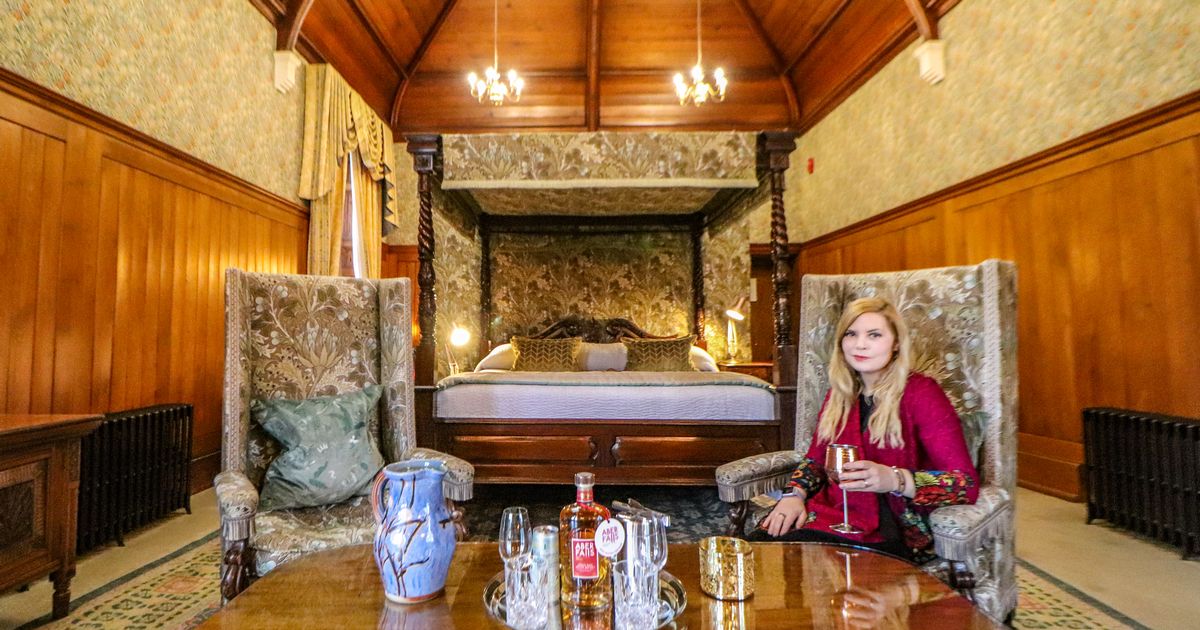A tiny lakeside town in Wales now has the proud accolade of being home to one of the best hotels in the worldThis article contains affiliate links, we will receive a commission on any sales we generate from it. Learn more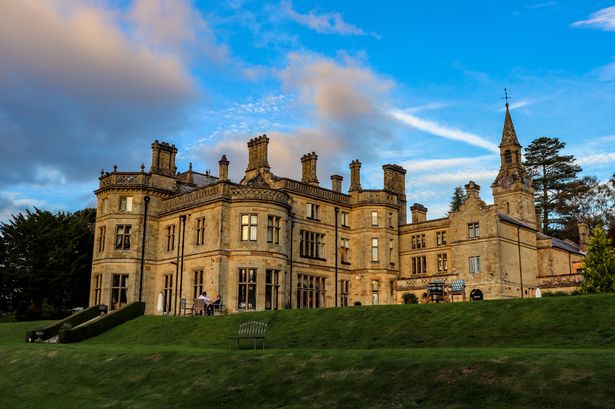 Pale Hall was named in The MICHELIN Guide as a must-visit destination.(Image: Portia Jones )
Pale Hall was named in The MICHELIN Guide as a must-visit destination.(Image: Portia Jones )
A tiny lakeside town in Wales now has the proud accolade of being home to one of the best hotels in the world. Bala is perched on the northern edge of Llyn Tegid, a freshwater glacial lake surrounded by the soaring peaks, and it is where you’ll find Palé Hall Hotel, the proud recipient of a MICHELIN Star key, which recognises hotels for outstanding stays.
This new way of recognising the best hotels in the world sees three properties in Wales, including Palé Hall, named in The MICHELIN Guide as a must-visit destination. The guide now features over 7,000 hotels worldwide, all assessed by experts across five categories: architecture and interior design, overall personality and character, quality and consistency of service, value for money, and contribution to the local area.
On October 8, inspectors also revealed the new “Key” distinctions, which, like Michelin Stars for restaurants, highlight the most outstanding hotels in the UK and Ireland. The selection for Great Britain and Ireland includes 14 Three-Key hotels, 43 Two-Key hotels and 82 One-Key hotels, with 19 hotels newly awarded for 2025.
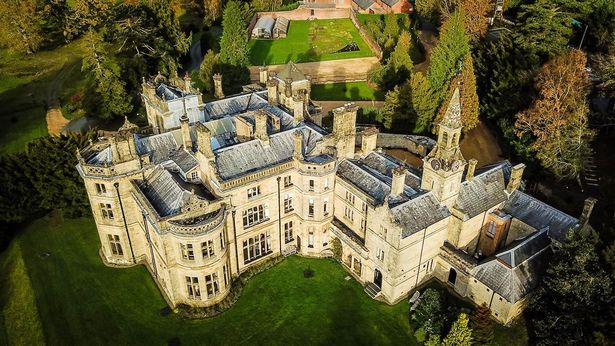 Palé Hall has long been one of my favourite hotels in Wales.(Image: Palé Hall)
Palé Hall has long been one of my favourite hotels in Wales.(Image: Palé Hall)
The prestigious guide names three Welsh hotels: Palé Hall Hotel in Llandderfel, Penmaenuchaf in Dolgellau, and Grove of Narberth in Narberth. All three have been awarded One Key.
Palé Hall has long been one of my favourite hotels in Wales, and I’ve stayed several times. With its illustrious history and lavish décor, this 18-room Victorian mansion is the perfect setting for a swanky escape on the edge of Eryri National Park (Snowdonia), with access to trails, lakes, and adventure activities.
A member of Relais & Châteaux, Pride of Britain Hotels and Celebrated Experiences, swish Palé Hall is independently owned by Anthony and Donna Cooper-Barney, who took over the hotel in 2024.
The ambitious pair plan to add a spa and a second restaurant and potentially expand the number of bedrooms. They have also invested £200,000 to create exquisite Welsh art galleries. From superstar gigs to cosy pubs, find out What’s On in Wales by signing up to our newsletter here
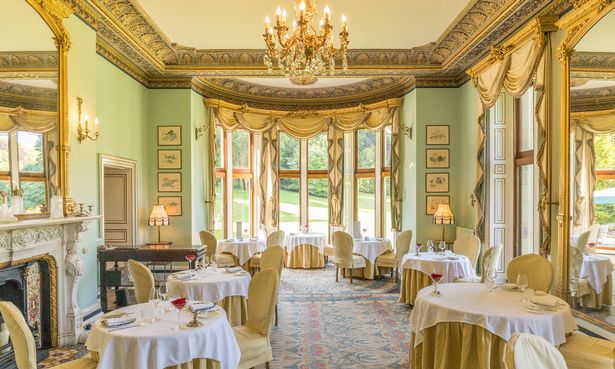 The hotel sure is fancy(Image: Palé Hall)
The hotel sure is fancy(Image: Palé Hall)
Arriving at this large countryside hotel is an experience in itself. The historic exterior, framed by gardens, woodland and a backdrop of rolling hills, creates an immediate sense of occasion.
Inside is a curious mixture of grandeur and décor I would describe as a hipster fever dream. Imagine a grand staircase, chandeliers, and roaring fireplaces paired with patterned wallpaper and abundant taxidermy.
Spacious rooms and suites are individually styled with thoughtful touches, and some even have unique features like a stained-glass roof light, chrome bateaux bath, and antique beds.
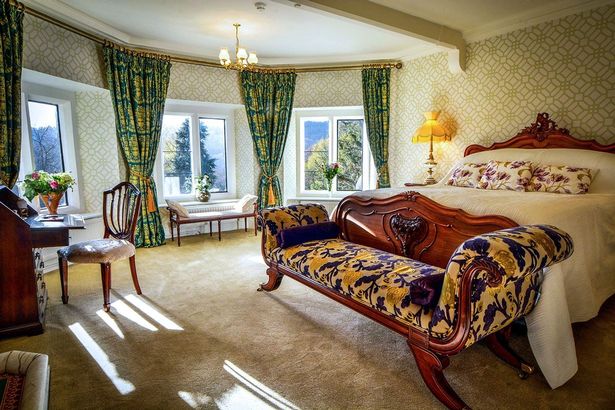 The Carmarthen room at Palé Hall(Image: Palé Hall)
The Carmarthen room at Palé Hall(Image: Palé Hall)
Take a moment to chat with staff, and you’ll soon discover that dog-friendly Palé Hall is more than just your standard countryside escape. Its history is as captivating as its architecture, tracing back to the 15th century when the original house was first built.
Constructed in 1871 by the esteemed railway engineer Henry Robertson, the house oozes character and class. Known for his ambitious railway projects across Wales, Robertson spared no expense in creating a home that mirrored his success.
The hall, designed by architect Samuel Pountney Smith, is a beacon of elegance and grandeur with its honey-coloured stone and eclectic Jacobean style.
Palé Hall’s role in history extends beyond its famous guests. During the First World War, it served as a convalescent hospital, providing recovery and respite for injured soldiers amidst its peaceful setting.
It took on a new role during the Second World War, providing refuge for evacuated children from urban centres. These young evacuees found safety, freedom, and an opportunity to explore the vast estate, creating memories that starkly contrasted with the turmoil of the time.
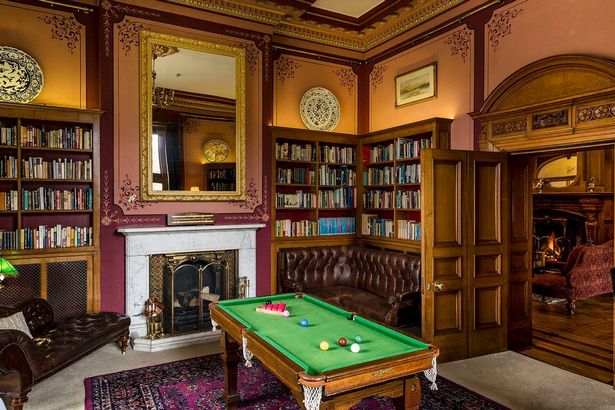 The library of Palé Hall(Image: Palé Hall)
The library of Palé Hall(Image: Palé Hall)
Over the years, Palé Hall has also hosted an impressive list of guests, including royalty. Queen Victoria visited in 1889, captivated by the house and its scenic surroundings. During her stay, she used a magnificent bath and slept in an ornate bed, both of which remain in the now aptly named Victorian Room, one of the many luxurious suites available if you want to splurge.
My favourite room is the Churchill suite, named after the man himself. In the 1950s, the hall became a favourite retreat for Winston Churchill, who often stayed while hunting on the estate’s expansive grounds. The Churchill Room preserves this historical connection, allowing guests to sleep in the grand room that once hosted the wartime leader.
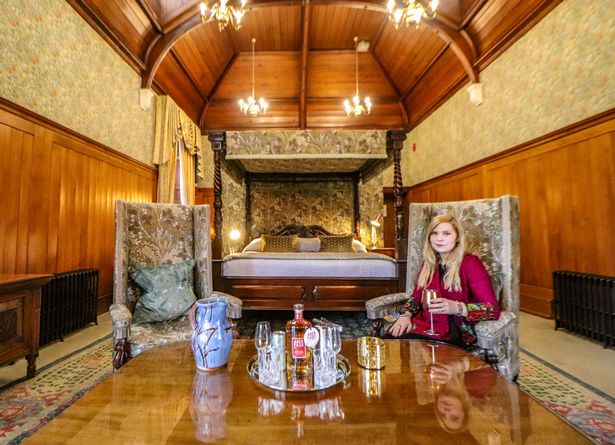 You can stay in a suite named after Sir Winston Churchill, who was an occasional guest at Palé Hall in the 1950s.(Image: Portia Jones )
You can stay in a suite named after Sir Winston Churchill, who was an occasional guest at Palé Hall in the 1950s.(Image: Portia Jones )
This dog-friendly suite has a magnificent vaulted ceiling, stained glass roof lights and exquisite wood-panelled walls. Behind a secret door (who doesn’t love a room with a hidden door), there’s a beautiful marble-lined bathroom where you can luxuriate in a copper and zinc bath while sipping a glass of fizz because, let’s face it, there’s no point in a bubble bath without prosecco, darlings.
Food-wise, you’re in great hands. For a truly special dining experience, the hotel’s Henry Robertson dining room is a must-visit. This elegant space, with its marble fireplace, ornate plaster ceilings, and chandeliers, sets the perfect scene for a fine dining feast.
As an AA three-rosette and Michelin Green Star establishment, Palé Hall takes pride in delivering impeccable cuisine that celebrates the finest British and Welsh produce.
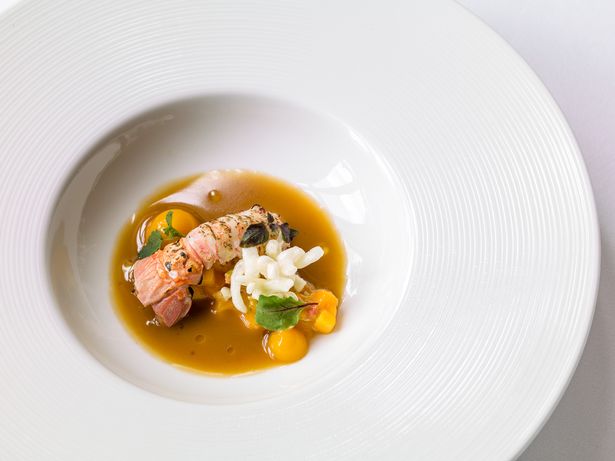 Palé Hall’s restaurant was awarded a Green Michelin Star in January, 2021, making it the first venue in Wales to achieve the accolade(Image: Chris Terry )
Palé Hall’s restaurant was awarded a Green Michelin Star in January, 2021, making it the first venue in Wales to achieve the accolade(Image: Chris Terry )
The carefully curated dinner menu is a testament to the culinary team’s skill and creativity. Starters like pulled pork croquette with burnt apple and radish salad set the tone, while mains such as the butter-roasted chicken with jumbo white beans and grain mustard sauce showcased the kitchen’s ability to balance comfort and sophistication.
Don’t miss out on the afternoon tea at Palé Hall either. The menu is a classic yet elevated affair, beginning with an array of delicate finger sandwiches, each tasty bite exploding with fresh, seasonal flavours.
On the other tiers are warm butter scones and a variety of exquisite patisserie and sweet treats, all served with tea or a glass of fizz if you’re feeling fancy.
 Afternoon tea at Palé Hall is not to be missed(Image: Portia Jones )
Afternoon tea at Palé Hall is not to be missed(Image: Portia Jones )
What the MICHELIN Guide says about Palé: “Set on 15 acres of riverside parkland in the Dee Valley, at the edge of the vast and wild Snowdonia National Park, Palé Hall is nothing if not secluded — a situation that only heightens the effect of its high Victorian opulence. Over the course of its colourful history, it’s played host to guests no less eminent than Winston Churchill and Queen Victoria herself. And in its current incarnation as a luxury hotel, it’s among the finest in Great Britain.
“The rooms and suites in the original house retain their classic style, while the Garden Suites, in the estate’s renovated coach house, take on a more contemporary aspect. All of them are plush as can be, and mix modern comforts with classic touches; the Victoria Room still contains the house’s original bathtub.
“Palé Hall’s smallish size allows for an unusually high standard of service, though the atmosphere is not an excessively formal one by any means. Leisure pursuits range from garden walks to mountain climbing and everything in between; lunch, tea, and dinner are served in the Henry Robertson Dining Room.”
The hotel is a beautiful place to base yourself in Bala. This small lakeside town has a long history. Roger de Mortimer of Chirk Castle founded it by Royal Charter around 1310. In 1485, Henry Tudor’s army marched through the area on its journey to the Battle of Bosworth.
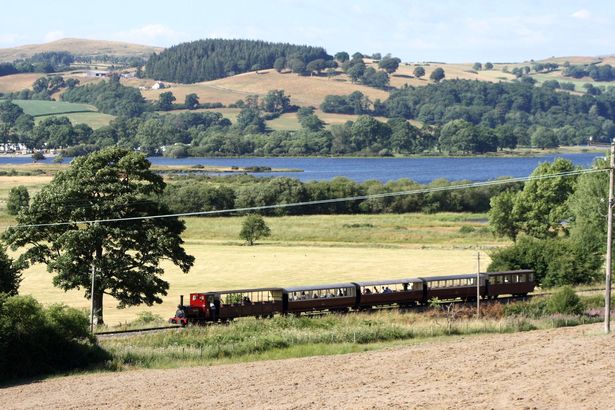 The Bala Lake Railway(Image: Rheilffordd Llyn Tegid)
The Bala Lake Railway(Image: Rheilffordd Llyn Tegid)
In the 18th century, the town was a hub for manufacturing flannel, stockings, and gloves. It’s since become a tourism hotspot and draws visitors from all over the UK and beyond.
Bala has a surprising religious connection as documented in the Mary Jones Pilgrim Centre, which tells the story of a Welsh girl on a holy mission.
In 1800, after saving money for six years, 15-year-old Mary Jones walked 26 miles from Llanfihangel-y-Pennant to Bala to buy a much-yearned-for Bible. Her faith-driven journey inspired the establishment of the British and Foreign Bible Society.
At the Grade II-listed centre, you can follow Mary’s pilgrimage and explore what happened through multimedia and interactive displays, exhibits, and activities.
For train lovers, the Bala Lake Railway is a must-visit for history lovers and train nerds (enthusiasts). This delightful narrow-gauge railway line runs along the southern shores of Llyn Tegid, offering an enchanting hour-long journey from Llanuwchllyn to Bala on a retro choo-choo. Blimming marvellous.
Local enthusiasts lovingly restored the line after the original Ruabon-Barmouth railway closed in the 1960s. It uses vintage locomotives that once transported slate from the region’s quarries, adding a touch of historical delight to your rail adventure.
This nine-mile cruise runs from the village of Llanuwchllyn to the outskirts of Bala, four and a half miles away. Kick back, relax, and enjoy lush views of the lake, surrounding woodland scenery, and the nearby mountains, Arenig Fawr, Aran Benllyn, and Aran Fawddwy.
For outdoor enthusiasts, Bala is a hub of adventure and offers a range of activities, such as rafting, fishing, swimming, and sailing.
![Beautiful Bala Lake [Llyn Tegid], Wales' largest natural lake, is over four miles long and a mile wide](https://www.europesays.com/uk/wp-content/uploads/2025/10/2_SnowdoniaNationalPark-19.jpg) Beautiful Bala Lake [Llyn Tegid], Wales’ largest natural lake, is over four miles long and a mile wide(Image: Portia Jones)
Beautiful Bala Lake [Llyn Tegid], Wales’ largest natural lake, is over four miles long and a mile wide(Image: Portia Jones)
The National White Water Centre is based in Bala and is a must-do activity for thrill seekers. Here, thundering water is regularly released from a dam into the River Tryweryn – a steep, fast-flowing mountain waterway that creates predictable rapids all year round.
Rafting is an adventure activity where you navigate a fast-flowing river in an inflatable raft, usually with a small team and a guide who (thankfully) knows what they are doing.
Armed with paddles, helmets, and nerves of varying steadiness, you work together to steer through swirling currents, drops, and foamy “rapids”, which are graded from gentle bobbing to a full-on rollercoaster ride through frothing waters.
Bounce and tumble along world-class grade three-to-four rapids on a river course impressive enough to have hosted international whitewater events.
To safely experience the rush of rating here, take a guided rafting experience and enjoy the adrenaline of paddling against the surging rapids with your boat buddies.
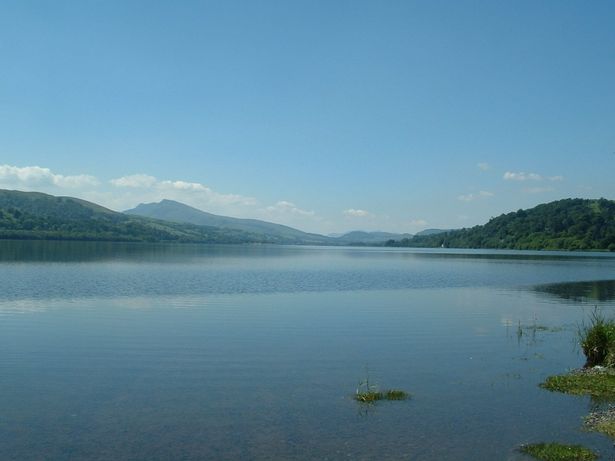 Llyn Tegid in Bala, Gwynedd(Image: Getty)
Llyn Tegid in Bala, Gwynedd(Image: Getty)
If you love hiking, Bala is a gateway to Wales’ most epic landscapes. To the west, the towering peaks of Eryri (Snowdonia) offer rugged and dramatic trails, while the quieter Berwyn Mountains to the east provide a sense of wild, untouched beauty.
For families, there are several easy trails, including the Treasure Trail, which is suitable for pushchairs and slow scenic walks. You can also take a lakeside stroll along a marked path.
If you are interested in history and culture, there are heritage walks including the Town Trail, the Mary Jones Walk, and the Betsi Cadwaladr Trail.
If you’re looking for wild lake adventures, legend-filled Llyn Tegid has the most inviting, clear water for outdoor swimming.
The lake is connected to the legend of Tegid Foel, the wicked husband of Ceridwen, who is known in Welsh mythology for his cruelty and opulent lifestyle. You can read more about this curious Welsh legend here.
In the vast waters of the mysterious lake, you can paddle, splash, or take an icy dip during the colder months. For confident swimmers, the Big Bala Swim allows you to participate in an organised swim event with Love Swim Run.
The main open-water swim route is 4.5km, but if you want a bigger challenge, there is a 9km swim that covers two lengths of the 4.5km course.
After a day of adventure, there are several independent pubs and cafes for a big feed and a pint. The historic Plas Coch Hotel, built initially as a coaching inn around 1780, serves Welsh dishes utilising fresh local produce.
White Lion Royal Hotel Restaurant is another former coaching inn. It has a large dining room with log fires and a selection of Brains real ales.
There are many lovely B&Bs, guest houses, and inns in the town and surrounding area. You can search for accommodation on sites like Sykes Cottages, Airbnb, holidaycottages.co.uk, and booking.com.
